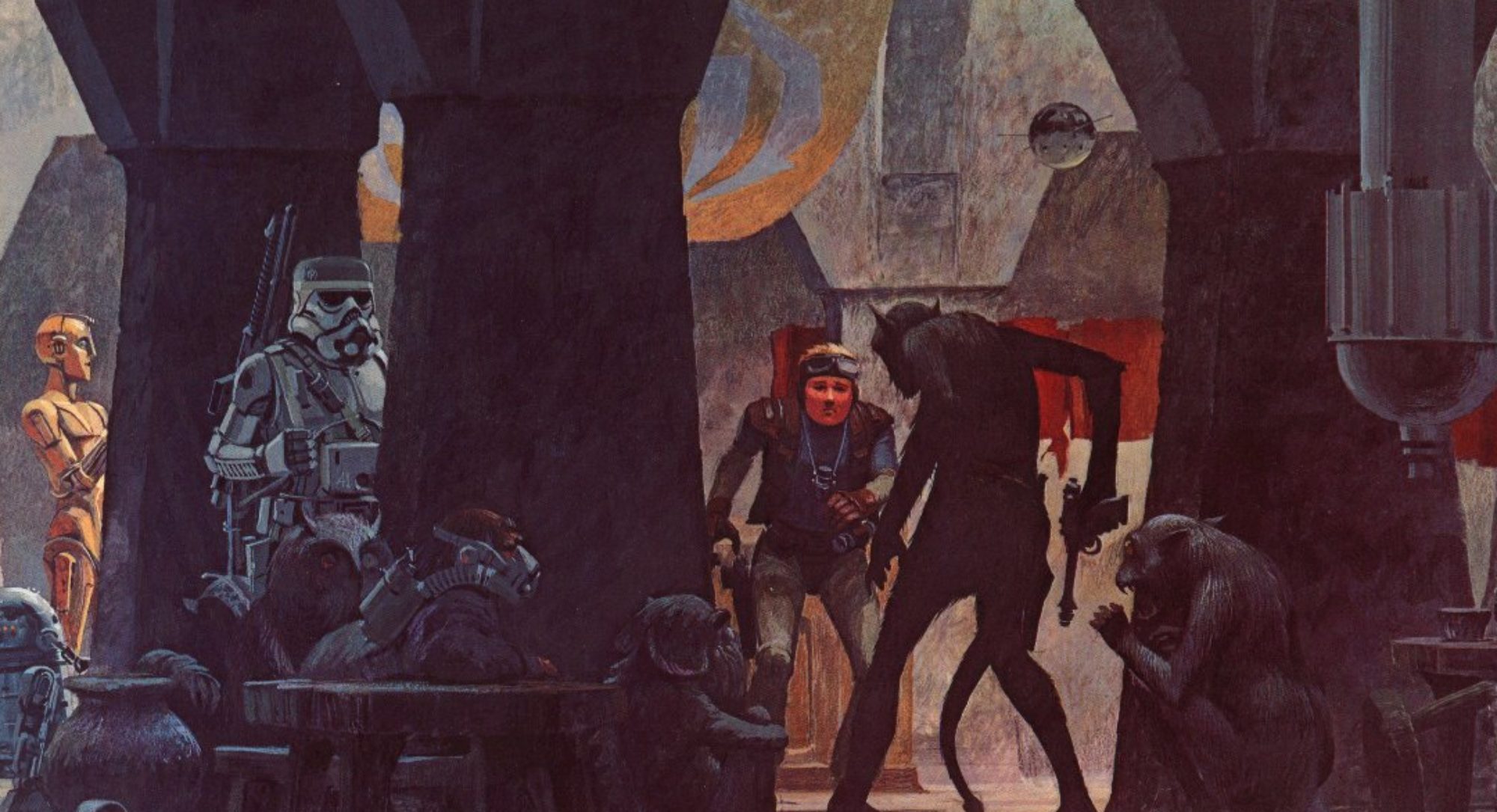In yesterday’s post I gave the “Why” — my reasons for saying that tabletop game industry folks should be moving into the wider transmedia field. Today, I’m going to talk about “What” and “How”.
CWF+RTB=$$$
That formula is the creation of Mike Masnick from Techdirt, taken from a 15-minute presentation he did at the 2009 MidemNet conference in Cannes. It means: Connection With Fans plus Reason To Buy equals Business Model. It’s an argument for how creatives (specifically musicians, in his example) can generate a living in an age of pirating downloads, clueless corporations and shrinking economies.
Take a look at the original presentation (rather than having me summarize). It’s only 15 minutes, and well worth your time:
(He did an expanded, 30-minute version of the presentation at the Leadership Music Digital Summit, about 3 months later —it’s available on vimeo, if you’ve got a bit more time.)
Essentially, Masnick is talking about a fairly basic concept: Create a fanbase, and then monetize that fanbase. This is something that we in the tabletop game industry already know how to do — gamers become fans of our products, and they purchase, with the goal being fans who purchase every release for a particular line. An evergreen customer.
We’ve got the connect with fans bit down pretty well — we’re used to talking to them on various internet fora, via Twitter, at Conventions, etc. The next step in the process is giving those fans a reason to buy — which, for most of us in the field, is where our thinking is currently limited. We’re stuck into the “if we build it, they will come” school of thought. We produce games, and gamers will buy them. That’s basically how it’s worked for the past 30-odd years. Your game comes out, you communicate that to consumers via ads or demos or spreading word-of-mouth via the internet, and gamers who are interested will pick it up, start playing, and recruit others.
I would argue that we need to give them more of a reason to purchase than “because it’s there.” We need to understand what they want, and that means getting into their heads.
It’s All In The Mind
I started researching the psychology of fandom — what drives the very tribal behavior of fan groups, what activities encourage that behavior, etc. The best resource I found (through a video of another talk given at the same MidemNet as Masnick’s, above) was Online Fandom, a blog that covers that very subject, by Nancy K. Baym, a professor of Communication Studies. Watch video of her presentation here (unfortunately non-embeddable).
Funny story — I had watched the video of her presentation and had gone to Online Fandom, reading everything she had posted… and it wasn’t until prepping to attend SXSW this past March that I realized that she’s an Associate Professor of Communication Studies at The University of Kansas–Right here, where I live. Small, small world.
Baym’s work (and the work of others, which I found through her references) taught me a lot, but also confirmed what, as a fan myself, I already knew: Fans tend to assume a level of ownership of the object of their fandom — they view it as theirs.
If we can give them things which speak directly to that sense of fan ownership and tribal identity, that gives a very compelling Reason To Buy. Transmedia properties, which often include interactivity and participatory structures as part of their design, are tailor-made for that sort of approach. Even better, because of the multi-vector nature of transmedia, it allows creators to open up specific areas of participation to fan ownership, without losing overall authorial control. (For example, allowing for fan creation of adventure material for the RPG portion of a transmedia property doesn’t effect the authorial control over, say, the web series portion.)
Can You “Take a Page” from Webcomics?
The webcomics folks have been living in the CWF+RTB=$$$ for quite some time. They give their content away for free, and yet the most successful ones make a good living as well. They do this by using the free content to create fans, and then monetizing that fanbase, by giving them reasons to buy. Special print collections, fan-identity items like shirts and the like, and more. As Howard Tayler of Schlock Mercenary once said: the whole thing is like grizzly bear soup. First you’ve got to find, hunt and kill a grizzly bear (that’s the creating fans part), and after that, it’s just a soup recipe. Meaning — if you can create the fans, getting the money isn’t that hard.
If you haven’t watched Tayler’s presentation from the Utah Open Source Conference in 2008, I cannot recommend it enough. It was a game-changer for me (and I was lucky enough to be able to tell him so at GenCon last year). It’s about 30 minutes in length:
Another good source of advice and information is the website Webcomics.com — it’s a paid site ($30 per year — absolutely, unreservedly worth it) run by Brad Guigar (Evil, Inc.), with regular contributions from Scott Kurtz (PvP) and Robert Khoo (the Director of Business Development for Penny Arcade). They’re talking about webcomics — but a lot of the advice is equally applicable to anyone who is engaged in digital delivery of entertainment.
It’s the “Freemium” business model (as coined by Chris Anderson, and discussed in his book Free: The Future of a Radical Price) — which, when we combine it with Masnick’s formula and Baym’s behavioral research, leads us to the main model for us to follow: Use free content as a gateway to create fans of our properties, and then offer them reasons to purchase based on the psychological drives of fandom.
To Be Continued (What, again?)
This one got bigger than I was expecting as well — although I guess I should’ve expected that: trying to sum up years of research and thought on this topic into a blog post is bound to get lengthy.
We’ve discussed “Why” and “How” — well, the big-picture “How”, at any rate. Tomorrow: Down to brass tacks. What do we do, and how do we do it?
Please add your comments or questions below.


I’ve been spreading the gospel of that Trent Reznor video anywhere I can.
I think that RPG companies will really need to work more on the Reason To Buy side of things though, because even the guy who downloads a bunch of torrents and then runs a game still feels like he’s a fan and still feels ownership. I’m not exactly sure where the line between “cool and unique incentive” and “gimmick” lies, but I’m pretty sure that the Machine Zeit engraved USB drive falls firmly in the former category, and is an idea I thoroughly plan on ripping off myself.
Just a quick note for folks waiting for the third part of this series. Things got away from me a bit today (I’m in the home stretch of getting ICONS ready for release), and so the next part will have to wait until tomorrow.
Stay tuned!
I’m a long time Techdirt reader, and one of the scarcites that Masnick cites as sellable is content yet to be created. Whenever I read that, my first geeky thought is about Greg Stolze’s use of the Ransom Model.
I don’t know how detailed you planned to get, but these posts have caught my eye, and I hope you can give your thoughts about the Ransom Model in relation to RPGs, if you have a chance to, that is.
These posts are brilliant! I’d like to add a word of caution: that “push-back” is in-and-of-itself adequate provocation (for some of us) to buy. A lifetime invested in appointment television, queuing up for sullen, paranoid gatekeepers, and being censured for remixing is embittering when times change and opportunities proliferate for customers (rather than consumers) to invest time, attention and capital in more transparent pursuits, industries and brands.
And along with “Why”, “What” and “How”…Who matters lots. Who you want to partner with has to include us fans.
I felt good the we are already doing some of this with our patronage projects recruiting fans, giving them ownership of the product (hey they are in the credits), the fans can contribute directly in the design, development, alpha and beta play-test stages of the project.
Steve Russell
Rite Publishing
“And along with “Why”, “What” and “How”…Who matters lots. Who you want to partner with has to include us fans.”
Absolutely. An excellent point.